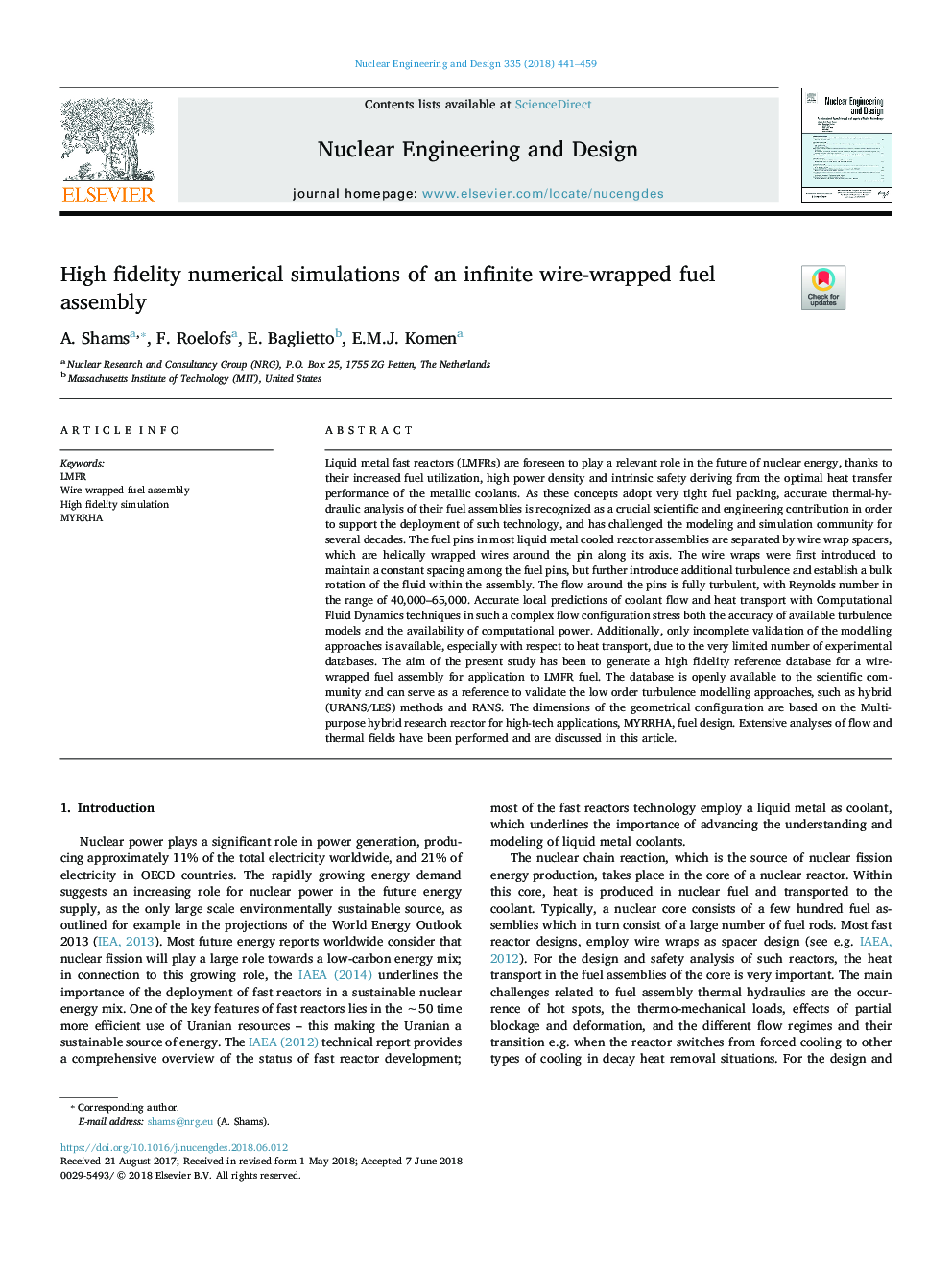| Article ID | Journal | Published Year | Pages | File Type |
|---|---|---|---|---|
| 6758800 | Nuclear Engineering and Design | 2018 | 19 Pages |
Abstract
Liquid metal fast reactors (LMFRs) are foreseen to play a relevant role in the future of nuclear energy, thanks to their increased fuel utilization, high power density and intrinsic safety deriving from the optimal heat transfer performance of the metallic coolants. As these concepts adopt very tight fuel packing, accurate thermal-hydraulic analysis of their fuel assemblies is recognized as a crucial scientific and engineering contribution in order to support the deployment of such technology, and has challenged the modeling and simulation community for several decades. The fuel pins in most liquid metal cooled reactor assemblies are separated by wire wrap spacers, which are helically wrapped wires around the pin along its axis. The wire wraps were first introduced to maintain a constant spacing among the fuel pins, but further introduce additional turbulence and establish a bulk rotation of the fluid within the assembly. The flow around the pins is fully turbulent, with Reynolds number in the range of 40,000-65,000. Accurate local predictions of coolant flow and heat transport with Computational Fluid Dynamics techniques in such a complex flow configuration stress both the accuracy of available turbulence models and the availability of computational power. Additionally, only incomplete validation of the modelling approaches is available, especially with respect to heat transport, due to the very limited number of experimental databases. The aim of the present study has been to generate a high fidelity reference database for a wire-wrapped fuel assembly for application to LMFR fuel. The database is openly available to the scientific community and can serve as a reference to validate the low order turbulence modelling approaches, such as hybrid (URANS/LES) methods and RANS. The dimensions of the geometrical configuration are based on the Multi-purpose hybrid research reactor for high-tech applications, MYRRHA, fuel design. Extensive analyses of flow and thermal fields have been performed and are discussed in this article.
Keywords
Related Topics
Physical Sciences and Engineering
Energy
Energy Engineering and Power Technology
Authors
A. Shams, F. Roelofs, E. Baglietto, E.M.J. Komen,
